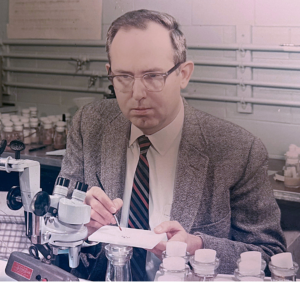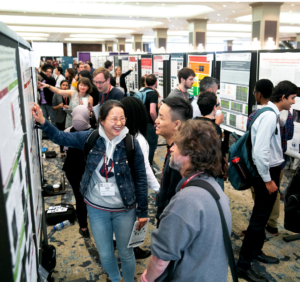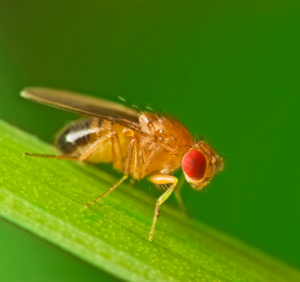Today’s guest post was contributed by Caitlin Rossi, a scientific and medical writer. Her work can be found at caitlinrossi.com.
Sexual determination is one of the most fundamental themes in biology, but geneticists are still trying to define exactly what gives rise to an egg or a sperm in Drosophila, or the fruit fly. When it comes to the female sexual determination pathway, the OVO gene has been hypothesized as a key player in this genetic network, abundant in XX reproductive cells but sparse in X reproductive cells. While the OVO locus has been well-detailed in the literature, the rise of new technical advances just may have rendered the legacy genetic model outdated.
Taking advantage of novel genetic methods, a new study published in G3: Genes|Genomes|Genetics explores OVO expression and localization in developing and adult germ cells. The authors set out to determine whether this gene is essential for female reproductive cells to survive in the embryonic and adult germline. Ultimately, the study helps answer one of the most vital lingering queries in genetics: How do reproductive cells, which at first seem the same between the sexes, go on to become radically different?
The authors examined OVO activity using short- and long-read RNA sequencing. To visualize and study its behavior, they endogenously tagged OVO and used a flip-out construct—a genetic tool that removed OVO from target cells to study the effect of its absence and better understand its overall function. Not only was OVO present in all adult female germ cells, it was also passed down to newly formed germ cells. The mother’s supply of OVO remained steady until the cells of the offspring—both female and male—were able to begin gene activity and make their own OVO.
While both female and male germ cells expressed OVO during the larval stage, only females needed it to be viable. After the initial maternal supply dwindled, female germ cells that could not create their own became sterile. The authors concluded that OVO is likely always present in the Drosophila female germline from one generation to the next. If OVO stimulates its own production as seen in this study, it is possible that maternal OVO expression will be necessary to activate zygotic OVO expression. Maybe reproductive cells need OVO to make OVO.
This updated, detailed OVO genetic model expands our current understanding of the OVO locus. OVO appears to be a major factor underlying germline sexual identity and required for female germ cell viability. Specifically, continuous OVO-B expression is necessary to differentiate female germ cells, while the role of wild-type OVO-A isoform remains a genetic mystery. Future research comparing OVO regulation in male and female germ cells will offer further insight into sexual reproduction and early embryonic development.
References
-
Female germline expression of OVO transcription factor bridges Drosophila generations
Leif Benner, Savannah Muron, Charli L Wingfield, Brian Oliver
G3: Genes|Genomes|Genetics. February 2025; 15(2).
DOI: 10.1093/g3journal/jkae252































